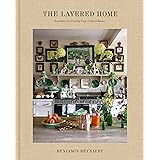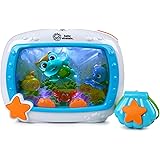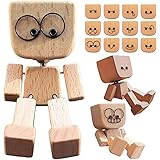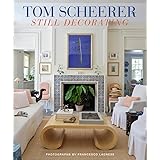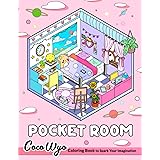Your Guide to an Amazing DIY Kitchen Update: A Budget-Friendly Transformation
Did you know that a full kitchen renovation can cost anywhere from $15,000 to over $50,000, often reaching an average of $25,000? However, with a smart approach and a little elbow grease, you can achieve a stunning kitchen transformation for a fraction of that price. The video above beautifully showcases how a creative homeowner completely revitalized her kitchen, turning a vision into reality. This guide will dive deeper into the strategies she employed, providing actionable tips and expanding on the techniques for your very own DIY kitchen update.
The Power of a DIY Kitchen Update: Transforming Your Space on a Budget
Embarking on a DIY kitchen update is more than just saving money; it’s about infusing your personality into the heart of your home. It proves that significant change doesn’t always demand a significant investment. Rather than tearing everything out, focusing on key elements like cabinets and backsplashes can yield dramatic results. This approach allows homeowners to refresh their space, making it feel brand new without the disruption or cost of a full gut renovation. It’s a testament to the fact that creativity and a willingness to learn can go a long way.
While a complete overhaul might seem appealing, it’s often unnecessary for achieving a fresh, modern look. Sometimes, all it takes is a coat of paint, updated hardware, and a stylish backsplash to completely alter a kitchen’s aesthetic. This process empowers you to take control of your home’s appearance, giving you a sense of accomplishment. Moreover, learning new skills during a DIY project is a rewarding experience in itself. It’s like discovering a hidden talent you never knew you possessed, ultimately leading to a space that truly reflects you.
Cabinet Revival: Painting Your Way to a Modern Kitchen
Outdated cabinets are often the first thing people notice in a tired kitchen. However, replacing them can be incredibly expensive, especially if they are structurally sound. Painting existing cabinets is a highly effective and budget-friendly solution for a stunning DIY kitchen update. It breathes new life into your kitchen, instantly brightening the space and making it feel more contemporary. This method is particularly useful if your cabinets are in good condition but simply sport an unfashionable color.
Prepping Your Canvas: Cleaning and Degreasing for Optimal Adhesion
Before any paint touches your cabinets, thorough preparation is paramount. Grease, grime, and old food particles can cling to cabinet surfaces, preventing primer and paint from adhering properly. The video highlights using a simple solution of Dawn dish soap and hot water, which is surprisingly effective for cutting through stubborn grease. Alternatively, specialized degreasing solutions designed for kitchen use are available at most hardware stores. Think of this step like preparing a canvas for painting; a clean, smooth surface is essential for a beautiful finish.
Imagine trying to paint on a greasy window; the paint would simply slide off. Similarly, paint will struggle to bond with dirty or oily cabinets. Once cleaned, rinse the cabinets thoroughly with clean water to remove any soap residue. Allow them to dry completely before moving on. This meticulous cleaning ensures that your primer and paint will create a strong, durable bond, preventing chipping and peeling down the line. It’s a small effort that yields significant long-term benefits for your kitchen update.
The Primer Puzzle: Why Two Coats Are Better Than One
Primer is a critical step that many DIYers might be tempted to skip, but it plays a vital role in the success of your cabinet painting project. It acts as a bridge, helping the paint adhere better to the cabinet surface, especially if you’re changing a dark color to a light one, as seen in the video. The host opted for a method of not removing cabinet doors, which can save time but requires careful taping around hinges and inside edges. While removing doors often yields a smoother finish, leaving them attached is a viable option for those prioritizing speed and simplicity, especially for a beginner-level DIY kitchen update.
The video demonstrates the benefit of applying two coats of primer. The first coat, as the host explains, doesn’t need to be perfectly neat; its main purpose is to cover the existing surface evenly. This initial layer ensures complete coverage and creates a uniform base. Following this, allowing the primer to dry for at least an hour—or according to product instructions—is crucial. The second coat of primer then goes on much smoother, perfecting the surface for your chosen paint color. This dual-layer approach minimizes the number of paint coats needed and provides a more durable, professional-looking result. It’s like building a strong foundation for a house; the stronger the foundation, the better the final structure.
Choosing Your Color and Finishing Strong
Once primed, your cabinets are ready for paint. Selecting the right paint type is as important as the color. For kitchen cabinets, durable, washable paints are essential. Alkyd-enamel, hybrid enamel, or specialized cabinet paints are excellent choices, known for their hardness and resistance to everyday wear and tear. These paints are designed to withstand frequent cleaning and the demands of a busy kitchen environment. Just like choosing the right shoes for a marathon, selecting the correct paint ensures longevity and beauty for your DIY kitchen update.
The application process for paint mirrors that of primer, often requiring two or more thin coats for optimal coverage and a smooth finish. After painting, consider adding new hardware, such as handles and knobs, to complete the refreshed look. The video mentions the addition of knobs and handles, which instantly elevate the cabinet’s appearance and functionality. Even if your cabinets are relatively new but lack hardware, adding some can make them feel custom and high-end. Patience is truly a virtue throughout this entire process, as rushing can lead to imperfections. The host’s commitment, even working at 5 AM, highlights the dedication often required for a truly rewarding DIY project.
Backsplash Brilliance: Easy Peel-and-Stick Tile Installation
A backsplash is like the jewelry of your kitchen, adding personality and protecting your walls from splashes. Traditional tiling can be messy and intimidating for beginners, but peel-and-stick tiles offer a fantastic alternative for a swift and stylish DIY kitchen update. These self-adhesive tiles are easy to cut, apply, and reposition, making them an ideal choice for a quick refresh. They come in a wide variety of styles, mimicking everything from ceramic and subway tiles to natural stone, allowing you to achieve a high-end look without the hassle of grout and mortar.
Measuring and Planning Your Layout
Accurate measurement is the secret to a professional-looking peel-and-stick backsplash. Begin by clearing your countertop and removing any outlet covers, as demonstrated in the video. This provides extra space and ensures a clean edge. Use a tape measure to determine the area you need to cover, paying close attention to corners and around windows. Laying out your tiles on the countertop beforehand can help visualize the pattern and identify any cuts you’ll need to make. This pre-planning helps minimize waste and ensures a seamless installation.
When cutting tiles, a sharp utility knife and a straight edge are your best friends. Score the tile deeply on the front, then bend it back to snap it cleanly. For more intricate cuts around outlets, a template made from paper or cardboard can be helpful. Remember, precision in measuring and cutting will prevent awkward gaps or misalignments. Taking your time during this planning phase will make the actual application much smoother, akin to having a clear roadmap before a journey.
Application Techniques for a Seamless Look
The host emphasizes the strong adhesive quality of peel-and-stick tiles, warning that they can pull paint off the wall. This is a crucial consideration, especially if you’re renting; it’s always wise to test in an inconspicuous area if removal might be necessary later. When applying, start from a corner or a straight edge, aligning the first tile perfectly. Slowly peel back the adhesive backing as you press the tile firmly onto the wall. Work your way across, ensuring each new tile fits snugly against the previous one, creating those seamless lines the host champions.
To avoid visible seams, butt each tile tightly against its neighbor. Use a roller or a flat edge, like a small squeegee, to firmly press down the entire surface of each tile, removing any air bubbles and ensuring maximum adhesion. The host’s struggle with holding her phone while trying to get the bottom right highlights a common challenge: maintaining stability and precision. Working with both hands free is always recommended. This careful application, much like laying bricks perfectly, ensures that your backsplash looks cohesive and intentionally designed, enhancing your DIY kitchen update significantly.
Beyond the Basics: Other Budget-Friendly Kitchen Updates
While cabinet painting and a new backsplash are transformative, several other budget-friendly projects can further enhance your DIY kitchen update. Consider these additional ideas to create a truly personalized and cohesive space:
- Countertop Refinishing: The host mentioned transforming her countertops. Instead of costly replacement, explore countertop paint kits or contact paper, which can mimic the look of granite or marble. These options provide a fresh surface without the hefty price tag.
- Update Lighting Fixtures: Swapping out old, outdated light fixtures for modern ones can dramatically improve your kitchen’s ambiance. Even adding under-cabinet LED strip lighting can brighten workspaces and add a sophisticated touch.
- New Hardware: As the video demonstrates, new cabinet handles and knobs can instantly upgrade the look of existing cabinetry. This small detail can make a big difference in how your kitchen feels.
- Declutter and Organize: Sometimes, the best update costs nothing. Decluttering countertops and organizing cabinets can make your kitchen feel larger, cleaner, and more efficient.
- Add Greenery or Decor: Incorporating plants, stylish cutting boards, or a vibrant fruit bowl can bring life and color into the kitchen. These simple decorative elements complete the look and make the space feel inviting.
Embracing a DIY kitchen update is a journey of creativity and resourcefulness. It allows you to personalize your home while staying within budget, proving that a beautiful, functional kitchen is well within reach for anyone willing to put in the effort. Watch the video for a visual guide and get inspired to start your own incredible kitchen transformation!


